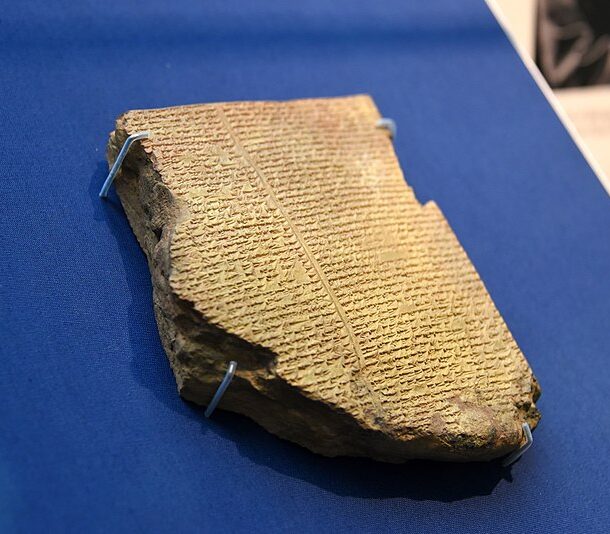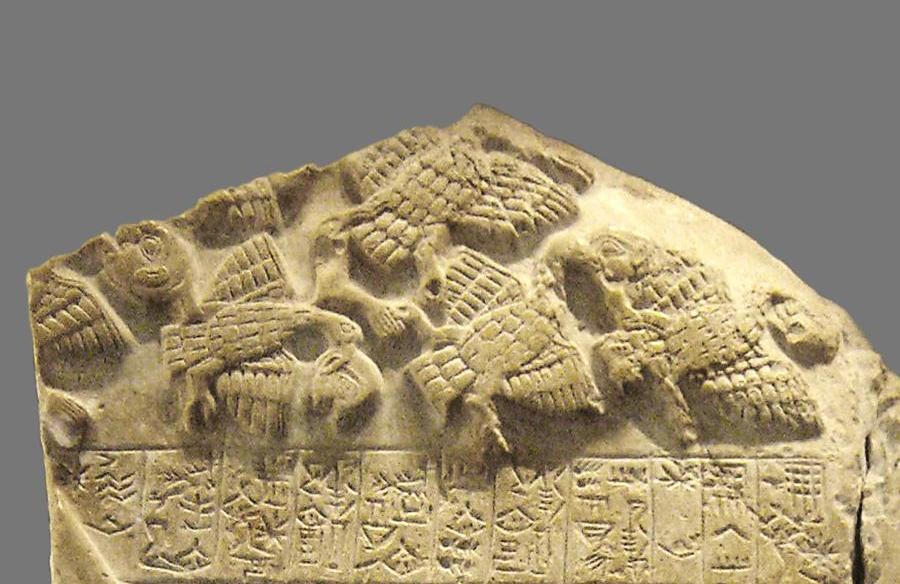When you see a Spanish word written down, so long as you know the rules, and barring the influence of regional accents, you know how to pronounce it. Same with Georgian, Korean, and many other of the more rational scripts. But if you see an English or a French word spelled out, you may find yourself choking on swallowed letters. I said yesterday that Akkadian used a phonetic writing system, and that is true. When compared to the logograms of Sumerian, the syllabary of Akkadian gives much more information about how a word should sound. But it’s still way beyond French in terms of the difficulty being able to read a word aloud on sight.
Even that is remarkable. Akkadian is a dead language, like Latin, and like Latin it has living descendants. This fact was unearthed by the decipherers of the Behistun inscription (day 28). They had two key insights: the script was phonetic; the script encoded a Semitic language. The way they made these leaps was firstly by comparing the way names of the kings were written out in Old Persian. This gave them a few signs with known sounds. And then when they went through the rest of the inscription, substituting in the now-known letters, some Semitic-sounding words began to appear. That opens the window just a crack, but it’s enough to let in the voices of Akkad.
Unlike Sumerian, Akkadian belongs to the Semitic family of languages, which today includes some thirty varieties of Arabic, as well as Hebrew, and Aramaic. Aramaic is important because it is a truly ancient language. Nowadays, modern versions are spoken only by a few religious communities like the Chaldean Catholic Church and some Jews with their roots in Kurdistan, but before Arabic arose, Aramaic was the lingua franca across much of the region. Crucially, it overlapped with Akkadian. We have reference texts, including a contemporary Aramaic translation of the Behistun inscription, which give us words common to both languages and which survive to this day.
Ok, that’s oversimplifying things. Old Aramaic is not the same as Neo-Aramaic, just as ye olde Englysshe is not the same as modern English. But, there are some well-understood processes by which languages develop, and which crop up in unrelated languages. Sometimes a consonant sound changes like the frequent replacement of the Latin “f” for “h” in Spanish. For example “furnus” for oven becomes “horno”, “facere” for the verb to do becomes “hacer”. Also, letters may become unpronounced, and gradually it’s no longer worth writing them down. If you think there are a lot of silent letters in French nowadays, remember there used to be an “s” in école, before they swallowed it.
Historical linguists use these processes to develop hypotheses about how certain signs were sounded out, and then test their hypotheses when new evidence is encountered. Thanks to this application of the scientific method, we can navigate our way back to Akkad, and end up listening to magic like this reading of tablet XI of the Epic of Gilgamesh.

